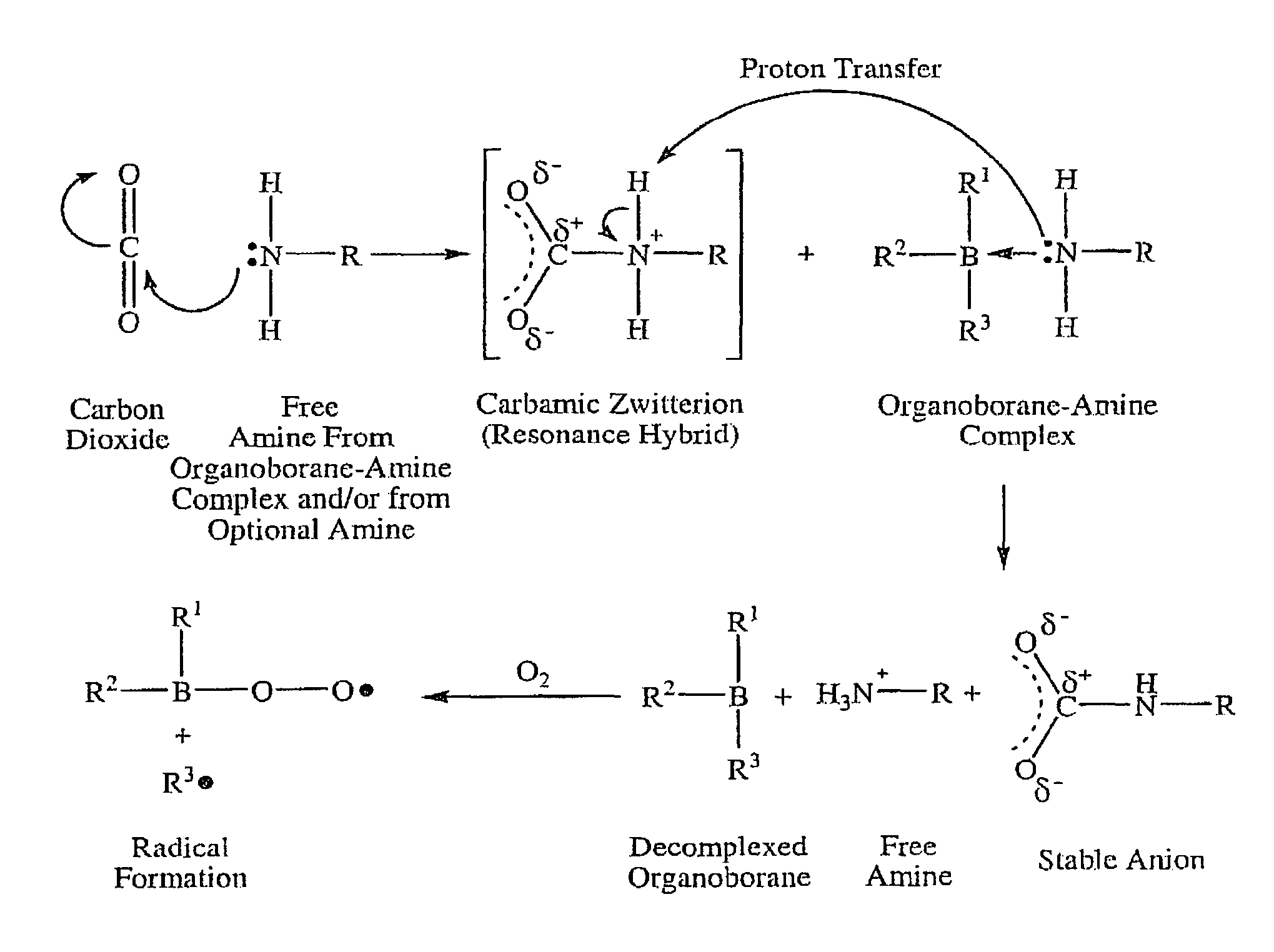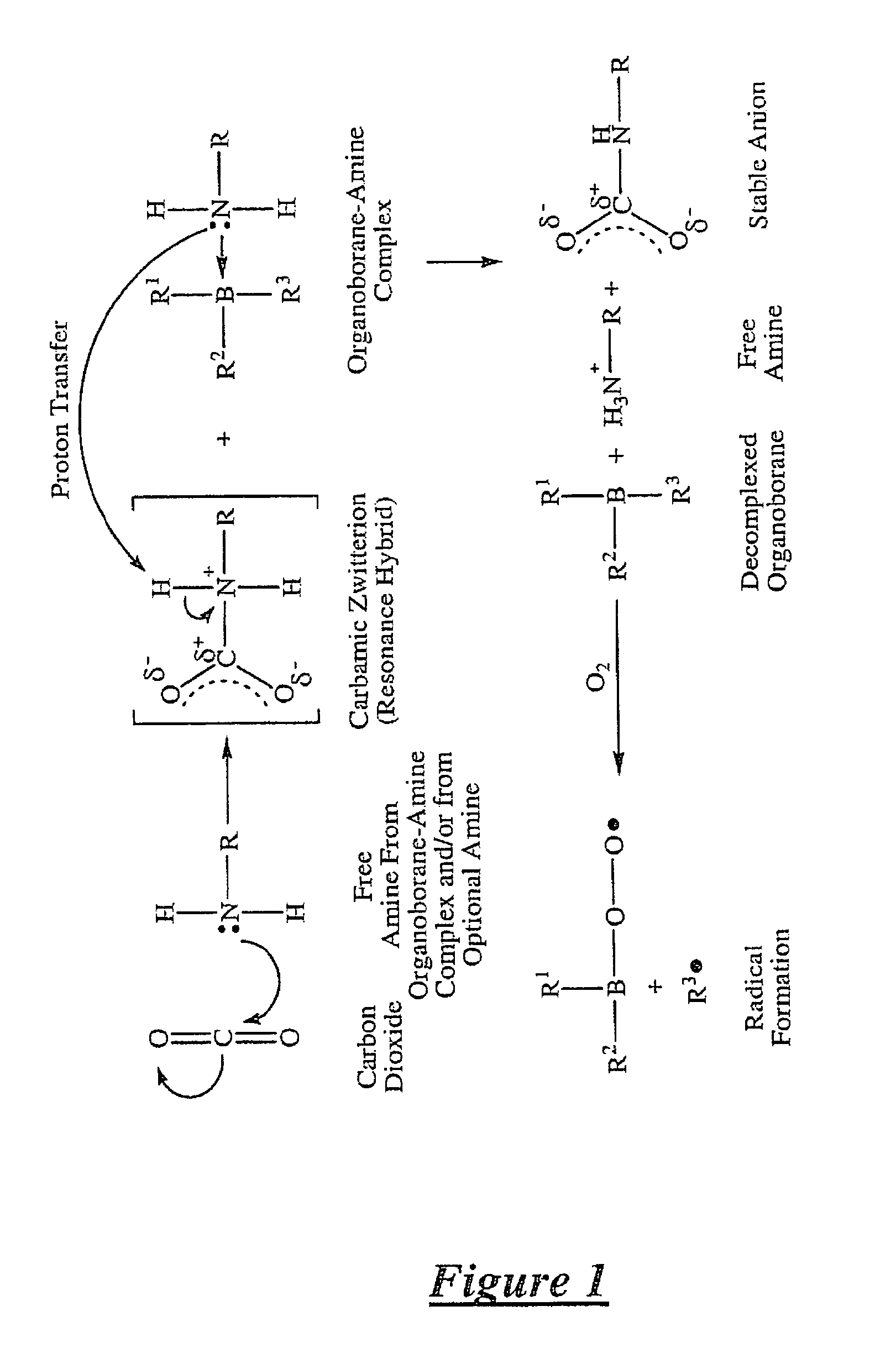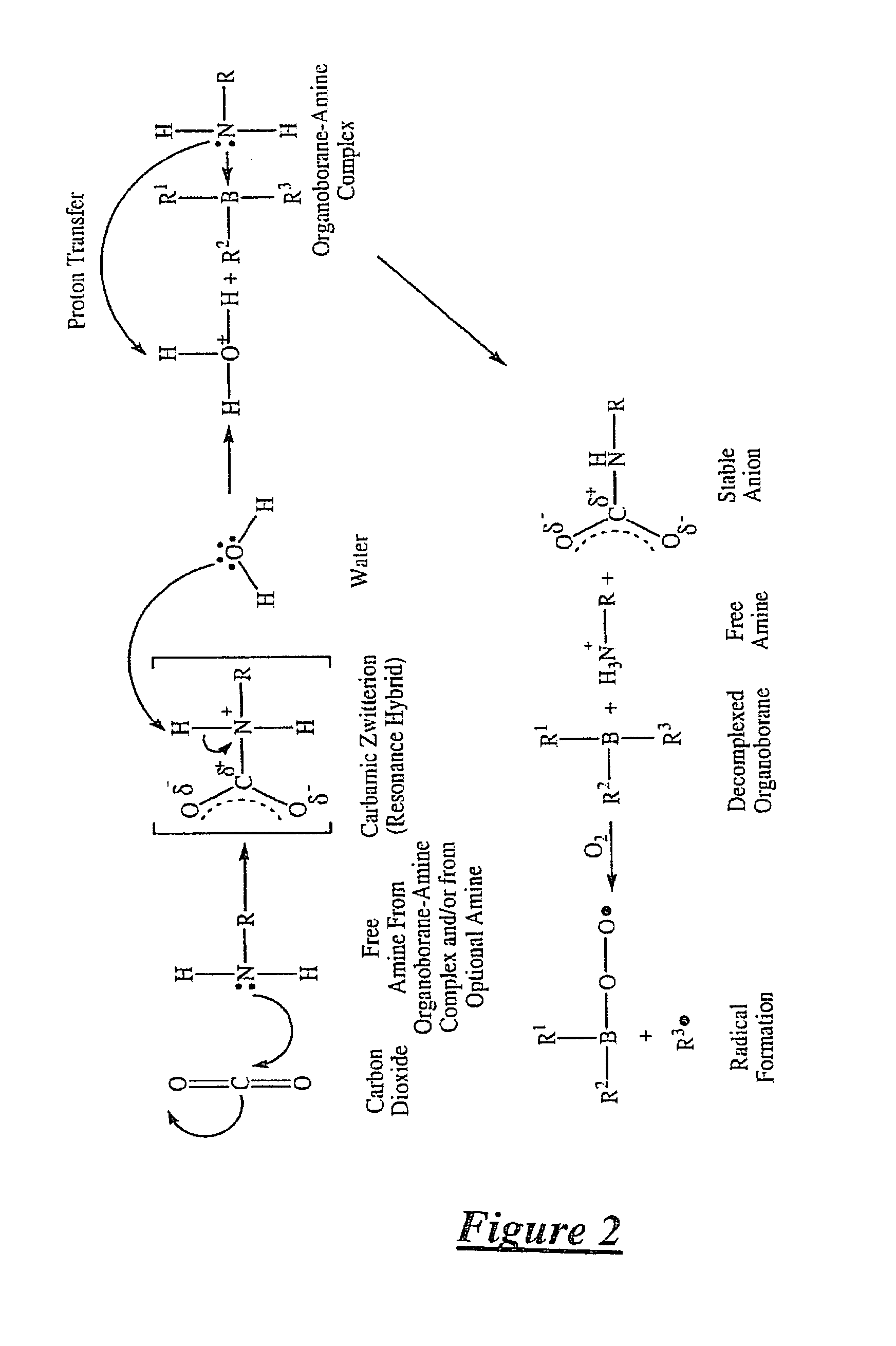Method of dissociating an organoborane-amine complex
a technology of organoborane and complex, which is applied in the direction of liquid surface applicators, pretreated surfaces, coatings, etc., can solve the problems of limited curing control, increased cure times, and difficult sequestering of surfaces, so as to reduce greenhouse gas emissions and environmental pollution, reduce emissions and pollution, and minimize oxygen surface inhibition of curing
- Summary
- Abstract
- Description
- Claims
- Application Information
AI Technical Summary
Benefits of technology
Problems solved by technology
Method used
Image
Examples
examples
[0089]A series of coating compositions (Compositions 1-8) are formed and applied to substrates using the method of the instant invention, as described below. Notably, none of the Compositions 1-8 includes a photoinitiator.
Formation of Composition 1:
[0090]Composition 1 is formed by combining 10.0 grams of Laromer UA 9061 as the radical polymerizable compound and 0.48 grams of triethylborane cysteamine (TEB-CA) as the organoborane-amine complex. Laromer UA 9061 is an aliphatic urethane acrylate that is commercially available from BASF Corporation.
Formation of Composition 2:
[0091]Composition 2 is formed by combining 10.04 grams of Laromer UA 9061 as the radical polymerizable compound and 0.99 grams of tri-n-butylborane cysteamine (TnBB-CA) as the organoborane-amine complex.
Formation of Composition 3:
[0092]Composition 3 is formed by combining 10.03 grams of Laromer UA 9061 as the radical polymerizable compound and 0.53 grams of tri-sec-butylborane diaminopropane (TsBB-DAP) as the organo...
PUM
| Property | Measurement | Unit |
|---|---|---|
| temperature | aaaaa | aaaaa |
| pressure | aaaaa | aaaaa |
| temperature | aaaaa | aaaaa |
Abstract
Description
Claims
Application Information
 Login to View More
Login to View More - R&D
- Intellectual Property
- Life Sciences
- Materials
- Tech Scout
- Unparalleled Data Quality
- Higher Quality Content
- 60% Fewer Hallucinations
Browse by: Latest US Patents, China's latest patents, Technical Efficacy Thesaurus, Application Domain, Technology Topic, Popular Technical Reports.
© 2025 PatSnap. All rights reserved.Legal|Privacy policy|Modern Slavery Act Transparency Statement|Sitemap|About US| Contact US: help@patsnap.com



